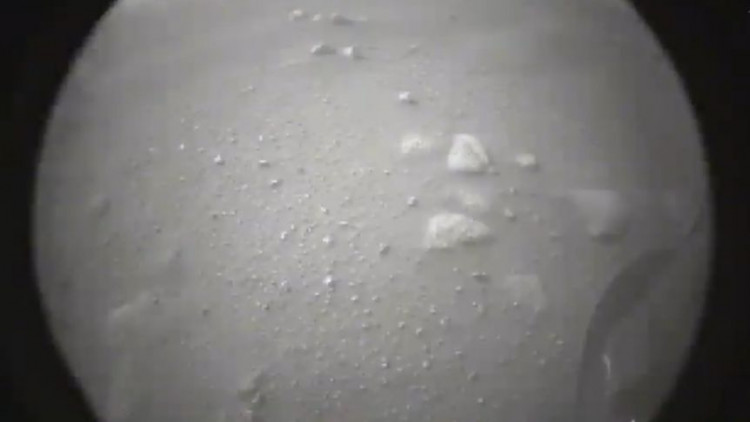NASA's Perseverance rover has landed successfully on Mars after a nail-biting descent for its handlers as the craft landed onto the Red Planet on auto-pilot.
The rover, which is about the size of a car, is the most advanced robot sent to the Red Planet to date, and just aced its "seven minutes of terror" touchdown this afternoon (Feb. 18), lowering its body gently inside 28-mile-wide (45 kilometers) Jezero Crater shortly before 4 p.m. EST (2100 GMT).
NASA's Mission Control at the Jet Propulsion Laboratory in Pasadena, California were all hoots and hollers at the moment of the touchdown, but this event was totally different from all the other Mars landings. Exuberant engineers and scientists jumped from their chairs, but social distancing guidelines prevented them from their usual celebratory hugs. Still, it was all smiles for the group.
"What a credit to the team," said Steve Jurczyk, NASA's acting administrator. "Everything went pretty much according to plan."
After a checkup sequence, Perseverance will begin to do what it's been built to do: hunt for signs of past Mars life, collect and keep rock samples for a future return to Earth, and to demonstrate some new exploration technologies.
Perseverance began its journey to Mars on July 30, 2020. For seven months, it traversed through space tucked inside its spacecraft like a bug inside its protective shell. The rover's six wheels were pulled inward, its mast and robotic arm folded, and a small helicopter called Ingenuity was snuggled under its belly.
But on Feb. 18, the most critical aspect of the rover's journey began--a do-or-die series of events known as entry, descent, and landing, or EDL.
At the conclusion of its cruising period, Perseverance was zooming in at 12,100 miles an hour toward Mars-much too fast to land safely. When the Martian atmosphere was reached, the drag on the spacecraft slowed down to less than 1,000 miles an hour, and then the parachute slowed down to around 200 miles an hour.
Indeed, this dangerous terrain needed Perseverance to make the most perfectly accurate Mars touchdown ever. The rover's landing ellipse was just 4.8 miles long and 4.1 miles wide (7.7 by 6.6 km), opposed to 4 miles by 12 miles (7 by 12 km) for its cousin, Curiosity.
Perseverance reached its destination today with the help of two new EDL tools that Curiosity did not have at its disposal. One, called the "range trigger," allowed the mission to deploy its supersonic parachute at the right moment. The other, "terrain-relative navigation," allowed the Perseverance's sky crane to evaluate the Jezero terrain and to maneuver around possible hazards during the descent.
These landing technologies operated exactly as expected, directing Perseverance to a picture touchdown on a safe, flat portion of Jezero's base, mission team members said this afternoon at a post-landing news conference.
And the rover appears to have made it through EDL in good shape. Perseverance has now given us the first images of its new surroundings, and initial health tests have found no causes for alarm.
The rover before Perseverance, Curiosity, landed in 2012 and remains in operation, as does the stationary lander InSight, which arrived in 2018 to study the deep interior of Mars.





